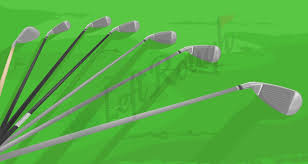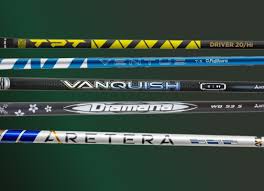Graphite vs. Steel Shaft Choosing the Right Golf Shaft for Your

Introduction: The Crucial Decision Between Graphite and Steel Shafts
When it comes to golf clubs, every detail matters, especially the choice between graphite and steel shafts. Each type offers unique characteristics that can significantly impact your game. In this article, we explore the differences between graphite and steel shafts, helping you make an informed decision based on your playing style, skill level, and personal preferences.
Understanding Graphite Shafts: Lightweight Performance and Flexibility

Graphite shafts are renowned for their lightweight construction, making them a popular choice among golfers seeking increased clubhead speed and distance. Here’s a closer look at what graphite shafts offer:
Lightweight Advantage
Graphite shafts are typically lighter than their steel counterparts. This reduction in weight allows for faster swing speeds, which can translate into greater distance off the tee and improved control over shorter shots.
Enhanced Flexibility
Graphite shafts are known for their ability to flex more during the swing. This flex can provide a smoother feel and increased forgiveness on off-center hits, helping to minimize the impact of mishits and improve consistency in your shots.
Vibration Dampening
Graphite shafts often offer better vibration dampening compared to steel shafts. This can result in a softer feel at impact, reducing the strain on your hands and joints during prolonged play.
Exploring Steel Shafts: Stability and Control

Steel shafts have long been favored for their stability and precision, catering to golfers who prioritize control and accuracy over sheer distance. Here’s why steel shafts remain a staple in many players’ bags:
Stability and Consistency
Steel shafts are heavier and stiffer than graphite shafts, providing greater stability throughout the swing. This stiffness translates into improved control over the clubhead, making steel shafts ideal for golfers who prefer a more controlled ball flight and precise shot-making.
Direct Feedback
Steel shafts offer more immediate feedback at impact, providing a solid, responsive feel that some golfers prefer. This direct feedback can help skilled players fine-tune their swings and make adjustments based on the feedback from each shot.
Durability
Steel shafts are generally more durable and resistant to wear and tear compared to graphite shafts. They are less prone to damage from bag chatter or accidental impacts, making them a reliable choice for golfers who frequently play or travel with their clubs.
Factors to Consider When Choosing Between Graphite and Steel Shafts
Swing Speed and Strength
Your swing speed and physical strength play a crucial role in determining which shaft material is best suited for your game. Golfers with slower swing speeds or those seeking to increase their distance often benefit from the lighter weight and increased flex of graphite shafts. In contrast, golfers with faster swing speeds may find that steel shafts provide the stability and control needed to harness their power effectively.
Playing Style and Preferences
Consider your playing style and preferences when selecting a shaft material. If you prioritize distance and forgiveness, graphite shafts may be the better option. Alternatively, if you value accuracy and consistency, steel shafts could be more suitable.
Budget and Investment
Graphite shafts typically come at a higher cost than steel shafts due to their advanced materials and manufacturing processes. Consider your budget and the level of investment you are willing to make in your golf equipment when weighing the pros and cons of each shaft type.
Making the Right Choice for Your Golf Game
Choosing between graphite and steel shafts ultimately comes down to understanding your unique playing style, preferences, and performance goals. Whether you prioritize distance, accuracy, control, or feel, both shaft types offer distinct advantages that can enhance your overall golfing experience.
Evaluate your swing characteristics, consider testing both graphite and steel shafts if possible, and seek guidance from a professional club fitter to ensure you find the shafts that optimize your performance on the course. By making an informed decision based on your individual needs, you can confidently select the shafts that best suit your game and help you achieve your golfing goals.
Embrace the journey of finding the perfect shafts for your golf clubs, knowing that whichever you choose—graphite or steel—you are enhancing your ability to enjoy and excel in this timeless sport.








